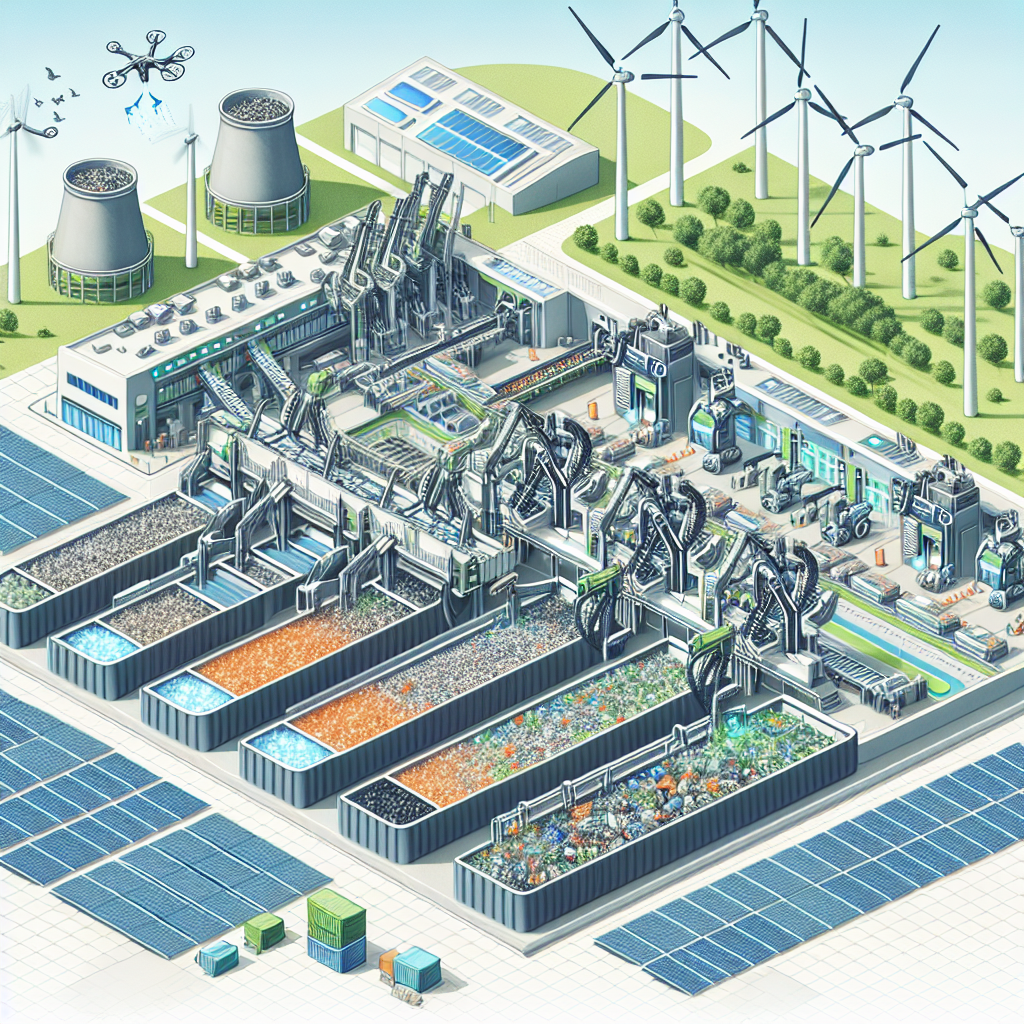AI-powered solutions for sustainable waste disposal are revolutionizing the way we manage our trash and reduce our impact on the environment. These innovative technologies are helping businesses and communities around the world improve waste management practices, increase recycling rates, and reduce landfill waste. In this article, we will explore some of the key AI-powered solutions for sustainable waste disposal and how they are making a difference in the fight against climate change.
One of the most significant advancements in waste disposal technology is the use of AI-powered sorting systems. These systems use machine learning algorithms to quickly and efficiently sort through large quantities of waste and separate recyclable materials from non-recyclable ones. This not only speeds up the recycling process but also ensures that more materials are diverted from landfills and sent to recycling facilities.
Another key application of AI in waste disposal is the use of smart bins and sensors. These devices are equipped with sensors that can monitor the fill level of trash bins in real-time and send alerts when they need to be emptied. This helps waste management companies optimize their collection routes, reduce fuel consumption, and lower their carbon footprint. Additionally, smart bins can also help reduce littering and illegal dumping by alerting authorities to overflowing bins in public spaces.
AI-powered robotic systems are also being used to automate waste collection and sorting processes. These robots are equipped with cameras and sensors that allow them to identify and pick up trash from various locations, such as city streets, parks, and beaches. By automating these tasks, waste management companies can reduce the risk of injury to workers, improve efficiency, and lower operational costs.
Furthermore, AI-powered predictive analytics are helping waste management companies forecast waste generation rates and plan for future disposal needs. By analyzing historical data and environmental factors, these systems can help predict peak waste generation periods and optimize waste collection schedules accordingly. This not only reduces the risk of overflow at landfills but also minimizes the environmental impact of waste disposal.
In addition to these technological advancements, AI-powered solutions are also being used to promote recycling and encourage sustainable waste management practices. For example, some companies are using AI-powered chatbots to educate consumers about the importance of recycling and provide tips on how to properly dispose of their waste. These chatbots can answer frequently asked questions, provide recycling guides, and even recommend eco-friendly products to help consumers reduce their environmental impact.
Overall, AI-powered solutions for sustainable waste disposal are helping businesses and communities reduce their carbon footprint, increase recycling rates, and improve waste management practices. By leveraging the power of artificial intelligence, waste management companies can streamline their operations, reduce costs, and protect the environment for future generations.
FAQs:
Q: How can AI help improve waste sorting and recycling processes?
A: AI-powered sorting systems use machine learning algorithms to quickly and efficiently sort through large quantities of waste and separate recyclable materials from non-recyclable ones. This not only speeds up the recycling process but also ensures that more materials are diverted from landfills and sent to recycling facilities.
Q: How do smart bins and sensors help optimize waste collection routes?
A: Smart bins are equipped with sensors that can monitor the fill level of trash bins in real-time and send alerts when they need to be emptied. This helps waste management companies optimize their collection routes, reduce fuel consumption, and lower their carbon footprint.
Q: What are the benefits of using AI-powered robotic systems for waste collection?
A: AI-powered robotic systems can automate waste collection and sorting processes, reducing the risk of injury to workers, improving efficiency, and lowering operational costs. These robots can also help reduce littering and illegal dumping by identifying and picking up trash from various locations.
Q: How can AI-powered predictive analytics help waste management companies plan for future disposal needs?
A: AI-powered predictive analytics analyze historical data and environmental factors to forecast waste generation rates and plan for future disposal needs. By predicting peak waste generation periods, waste management companies can optimize waste collection schedules and minimize the environmental impact of waste disposal.

